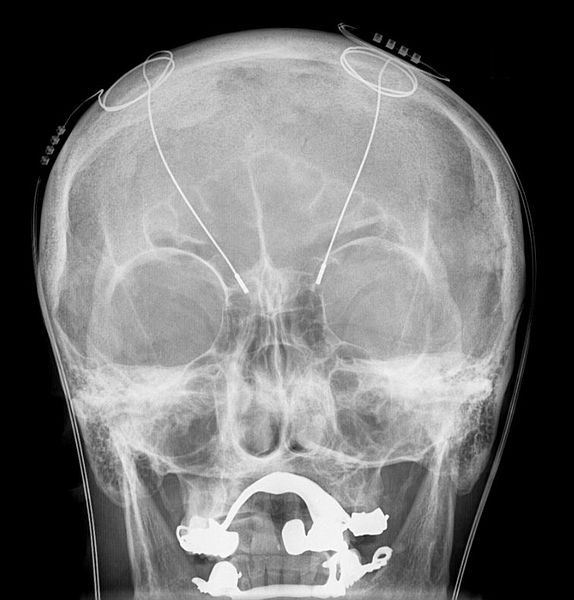Anorexia Nervosa is a very serious condition that leads people to refuse to eat, or to binge and purge. They are unable to maintain a healthy weight, and this can lead to severe complications, and even death. Anorexia has a mortality rate of 6-11%, so it is a very serious problem.
At the moment, treatments mainly focus on getting sufferers' weight up- by  feeding them through a tube if necessary, followed up by counselling, but for many patients, this does not lead to sustained weight gain.
feeding them through a tube if necessary, followed up by counselling, but for many patients, this does not lead to sustained weight gain.
A new study, published in the Lancet this week, tried inserting electrodes into the brains of 6 patients with chronic, severe, treatment resistant Anorexia. These electrodes stimulated a region of the brain called the Subcallosal Cingulate. Stimulation here affects the activation of the limbic system, which is known to control mood..
This treatment, known as Deep Brain Stimulation is used to treat Parkinson's, disorders thought to be caused by problems with brain circuitry such as depression, OCD, Tourette's and Alzheimer's. Anorexia sufferers often have depression and/or OCD as well, so Lipsman and colleagues from the University of Toronto decided to apply the same treatment to anorexic patients, and see if it had a positive effect.
Although initially after surgery, all 6 patients lost weight, 9 months later 3 patients had BMIs higher than before the surgery- this was the longest period of sustained weight increase since they became ill, and their quality of life had significantly improved as well. The other 3 showed no change in weight, but 2 of them had improvements in their mood, or scores on OCD questionnaires.
So why did they choose this particular brain region?
Neuroimaging studies have shown anorexic patients have various structural & functional brain differences. Those seen in the subcallosal cingulate, which was the target for this treatment, show similar patterns to those seen in depression, and as treatment has helped depressed patients, it seemed a good place to start.
DBS of this region has effects on many areas thought to be disordered in anorexia. The insula, for example, is involved in fear & anxiety, taste, and monitoring internal environment, all of which may play a part in the illness. The parietal lobe, which is involved in body &weight distortions, is also affected.
Anorexia is a complicated illness, with links with perfectionism, reward processing abnormalities, preoccuoation with body image, which implicate many different brain regions. Although the sample size was too small to draw any firm conclusions, this study suggests that DBS is worth exploring in more detail in relation to Anorexia, and this could provide a ray of hope to those for whom the normal treatments have been ineffective.
- Previous Bees get buzz from plant caffeine
- Next Flame retardant DNA










Comments
Add a comment